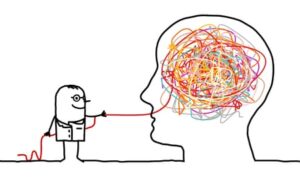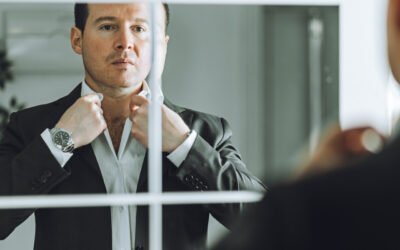You’re wired to see what you already believe. It’s a simple statement but the implications for decision-making are complex. What you already believe is built layer upon layer from your experiences which create a filter through which you see the world. Good decision-making relies on understanding how your brain’s filter colors perception and influences interpretation.
The brain is designed to be efficient and make good use of its energy. The most energy efficient approach is for the brain to take in information around you and make it fit into your personal filter system. It may not be 100% correct, but it is efficient. Take for example what happened to me last Christmas.
First, a word about my filter. My dad was a band director in the local high school in our small Texas town which was not a hot-bed of culture. In our household, talk was not of cattle and farm equipment but of music. I was the only 4th grader in town who could pick out an oboe by sight or sound. Now fast-forward to last Christmas. I was driving past our local Salvation Army building. Think about the Salvation Army particularly around the holidays. On this cold morning, there was a sign outside their local headquarters that read, “Bell ringers needed.”
“Wow.” I thought. “I didn’t know the Salvation Army had a bell choir! That sounds like fun. I wonder when they meet?” I was a mile down the road before my brain began to register, “….Wait a minute. Bell ringers? Salvation Army? Oh….not a bell choir.” My brain was wired to see what it already believed.
Now take that characteristic of the brain into decision-making. Your brain is designed to create meaning from what it experiences based on your history. For example, if you interview someone who grew up in an environment similar to yours, your brain will naturally endow them with attributes from your experience which may not reflect their reality. You may also interview someone from a different background or culture. Your brain naturally doesn’t connect with them as easily. It may feel more effortful.
As a leader who makes tough decisions, you must be aware of and vigilant to this natural tendency. If not, you will only hire people you relate to, you can underestimate key trends that your brain doesn’t register, and you may ignore input from staff you if you don’t relate to them.
So how do you counteract your brain’s predisposition to see what you already believe.
- Seek out information from those with differing backgrounds. A male leader I interviewed said that he purposefully seeks input from women leaders because they “connect the dots better than men. They see things relationally where I don’t.” He forces his brain to see a situation differently. You can gather input across gender, race, and cultural differences as ways to broaden perspective. Also, talk with those who come from a different career path or different industry. This opens up new habits of thinking.
- Challenge your assumptions. Your brain is constantly making assumptions in order to be efficient. Get into the practice of noticing and challenging your assumptions. This is good practice for your staff, too. Calling out assumptions forces them and you to think more deeply about the connections the brain is making about a situation. How can you make the phrase, “challenge the assumption,” a standard part of discussion?
- Force consideration of a different solution. When making a decision, ask yourself what would you do if your preferred approach was not available? The preferred approach is likely aligned with your brain’s history. Take that option off the table for the sake of discussion and exploration. Once again, you force the brain to look beyond its own filters for options that it discarded because they don’t fit the pattern.
Your brain is designed to quickly and easily match patterns and create meaning. That serves you well in many cases. In fact, we couldn’t function if we had to reevaluate every situation during the day. However, leaders and managers need to be aware that their brain is wired to see what it already believes. For key decisions, take the extra time, use the additional energy and force the brain to look beyond its historical boundaries. Decision-making will improve, and your brain will be broadened for the next time.






0 Comments